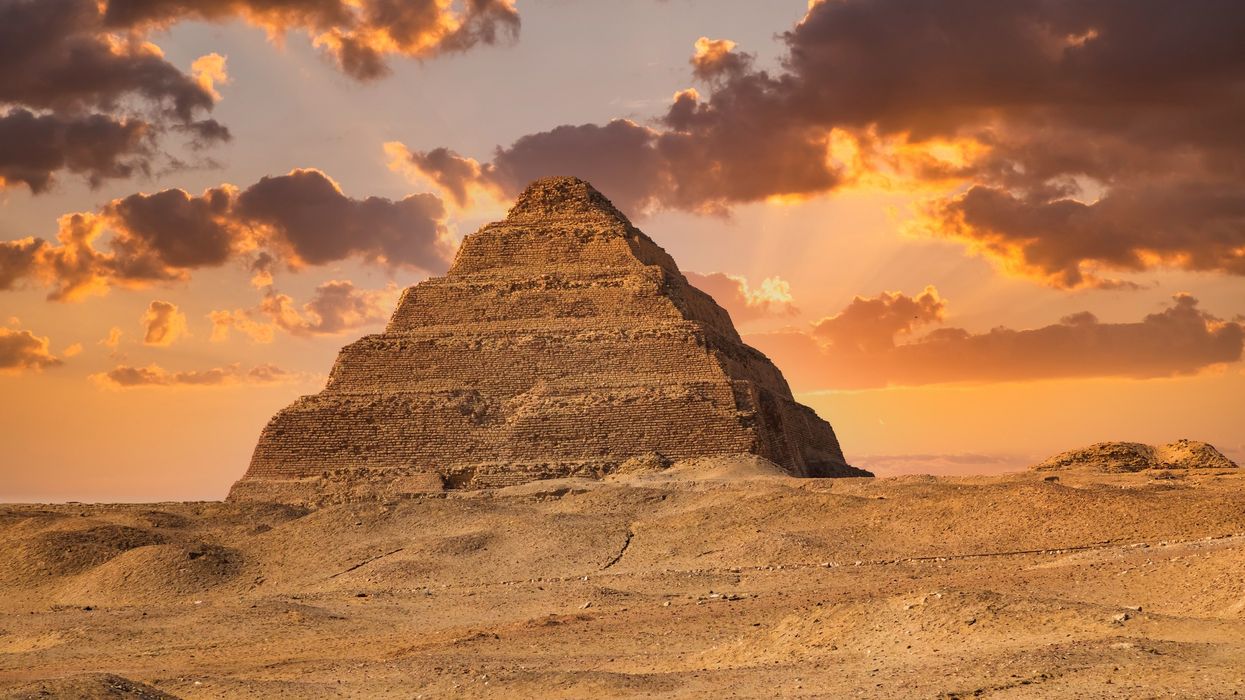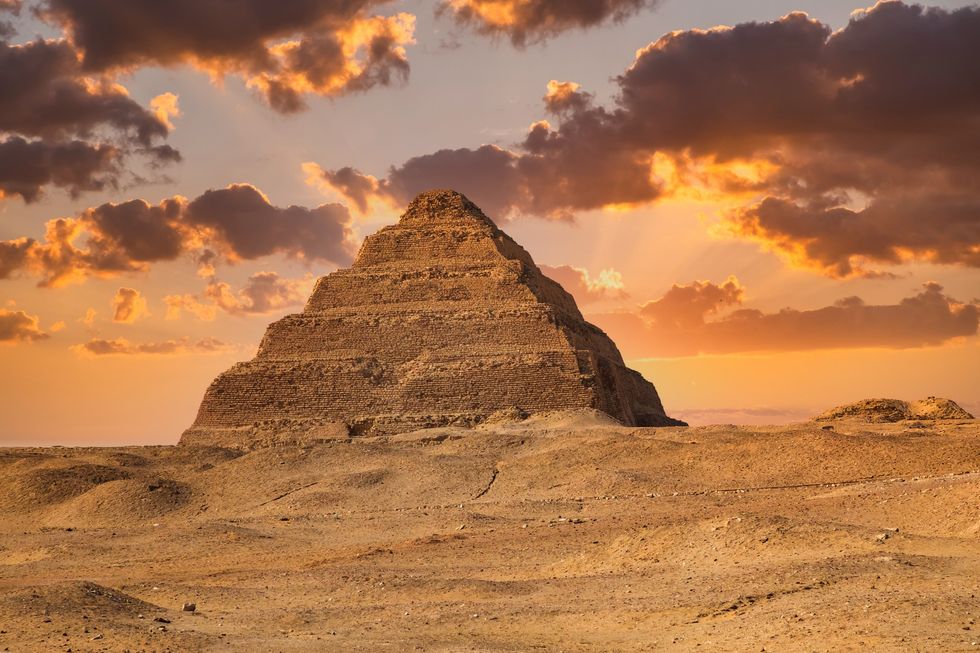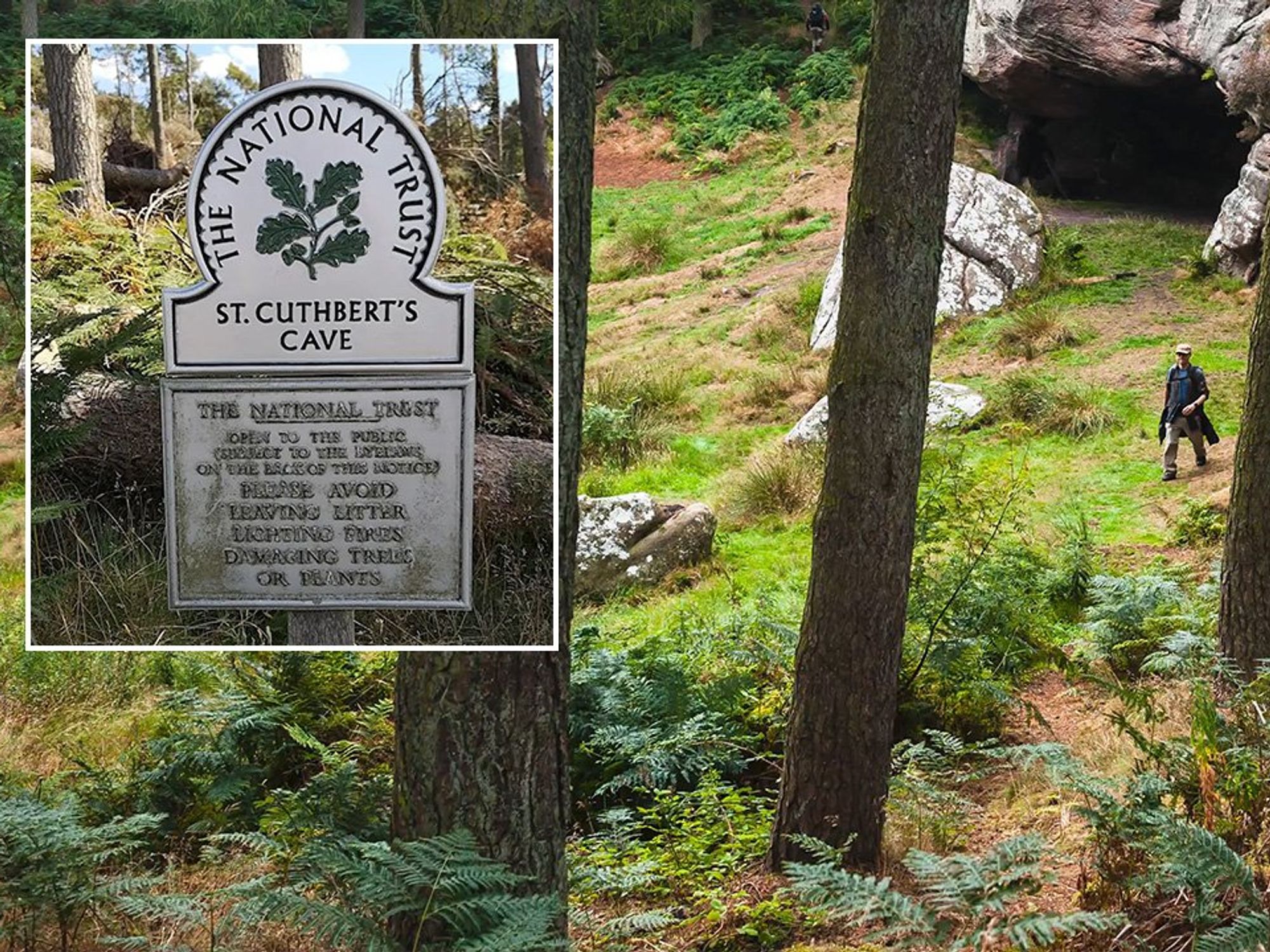Pyramid mystery laid bare as water power could have helped ancient empire build megaliths

Water could have helped assist the Egyptians building the pyramids in the middle of the desert, a new study suggests
|Getty

A series of dams and channels have been discovered near a pyramid
Don't Miss
Most Read
Water could have helped assist the Egyptians in building the pyramids in the middle of the desert, a new study suggests.
A series of dams and channels have been discovered near the Step Pyramid.
Archaeologists believe that funnels of pressurised water created a hydraulic lift that could help raise the huge stones.
The Egyptians invented hydraulics, building water mills and irrigation systems.
 Water could have helped assist the Egyptians building the pyramids in the middle of the desert, a new study suggests | Getty
Water could have helped assist the Egyptians building the pyramids in the middle of the desert, a new study suggests | GettyIt was previously believed that they used ramps, levers and pulleys to build the Pyramids.
The new hydraulic lift theory comes as the pyramid sits near a long-lost branch of the River Nile, while the dam was built on a flood plain.
Writing in the journal Plos One, Xavier Landreau, president of the Paleotechnic Institute in Paris, said: "Ancient Egyptians are famous for their pioneering and mastery of hydraulics through canals for irrigation purposes and barges to transport huge stones.
"This work opens a new line of research: the use of hydraulic force to erect the massive structures built by Pharaohs."
LATEST DEVELOPMENTS:
The Step Pyramid, also known as the Pyramid of Djoser, is the earliest pyramid in Egypt.
Royal tombs were usually made of mud-brick but the megalith - built around 2,600BC for King Djoser - was clad in polished white limestone.
The form became a mock-up for future pyramids, such as the Great Pyramid at Giza, which is more than double the height.
Researchers say the dam was built west of the pyramid in the Abusir Wadi valley, which involved water being channelled through a deep trench which stood at 1,300ft long and 89ft deep.

Archaeologists believe that funnels of pressurised water created a hydraulic lift that could help raise the huge stones
|Plos One
The water was funnelled underneath the pyramid using a series of conduit and into a shaft which would have allowed stones to be floated up to the upper levels in a system known as "volcano construction".
Landreau added: "It is highly probable that sediment-free water from the deep trench was used in this system.
"This water quality would have reduced the risk of fouling and malfunction because it minimises the presence of sand and clay that feed into the north shaft.
"We hypothesise that a hydraulic lift, a massive float that was possibly made of wood and weighed several tons, should run slowly inside the shaft to prevent instabilities and friction with the sides."










